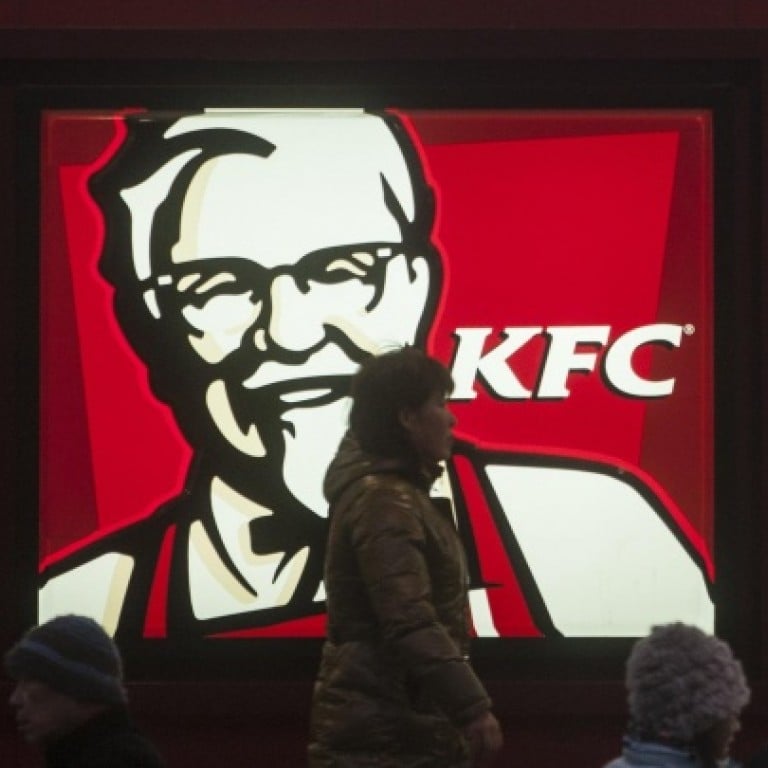
Bird flu adds to KFC's China woes
Fast-food chain 'failing to keep pace with rapid changes in tastes of Chinese consumers'
Can Colonel Sanders win back Chinese diners? Yum Brand reported that same-store sales on the mainland plunged 29 per cent last month as concerns about the safety of its chicken and the spread of bird flu prompted customers to stay away from its KFC restaurants.
While the company said the publicity fuelling the sales collapse would be "relatively short-lived", the perceived safety of KFC food is only one of the challenges tripping up Yum in its biggest overseas market.
KFC became the largest fast-food chain on the mainland because locals loved its fried chicken for the taste and the foreign cachet. Now, a drive to offer such local dishes as chilli black fungus is undermining KFC's American identity even as local fast-food chains selling Chinese and Western dishes proliferate.
Yum has not kept pace with a rapidly changing China, said Mary Bergstrom, the founder of Bergstrom Group, a Shanghai-based consulting firm. "The decor hasn't changed, and they haven't brought out what 'aspiration' looks like in China today," she said. "While the menu has become more traditional, it hasn't evolved with how consumers want to eat."
Yum has also yet to recover from revelations in December that locally sourced chicken contained unacceptably high levels of antibiotics.
Last month, the firm reiterated a forecast for a "mid-single-digit" profit decline for this year excluding certain items. Net income rose 21 per cent to US$1.6 billion last year.
Yum has become less valuable to investors, as well. The shares are trading at a 38 per cent premium to the Standard & Poor's 500 Index on a price-earnings basis. They traded as high as 62 per cent in May last year.
There is no evidence that avian flu can be contracted from eating chicken, and Yum's chief executive, David Novak, said last month that "we continue to remind consumers that properly cooked chicken is perfectly safe to eat".
Yum generates more than half its revenue in China and, as of 2011, had a 39 per cent share of the country's 86.9 billion yuan (HK$109.7 billion) fast-food industry, according to the most recent figures by the research firm Euromonitor.
Its nearest rival, McDonald's, had 15.6 per cent.
Now KFC is in danger of losing what made it distinctive, by loading up its menu with Chinese dishes.
Shaun Rein, the Shanghai-based managing director of China Market Research Group, said: "You want to localise, but also maintain your core brand DNA. The name of the game 10 years ago was localising, but at this stage, consumers are already sophisticated."

